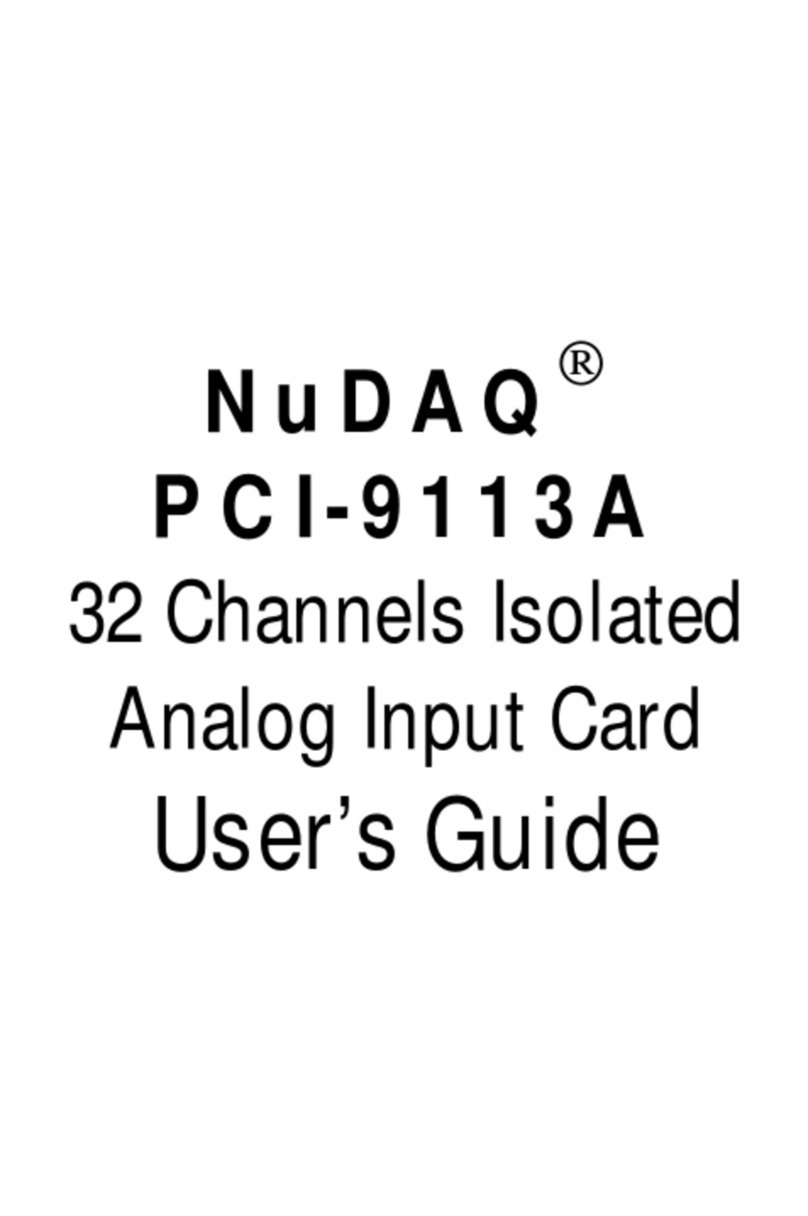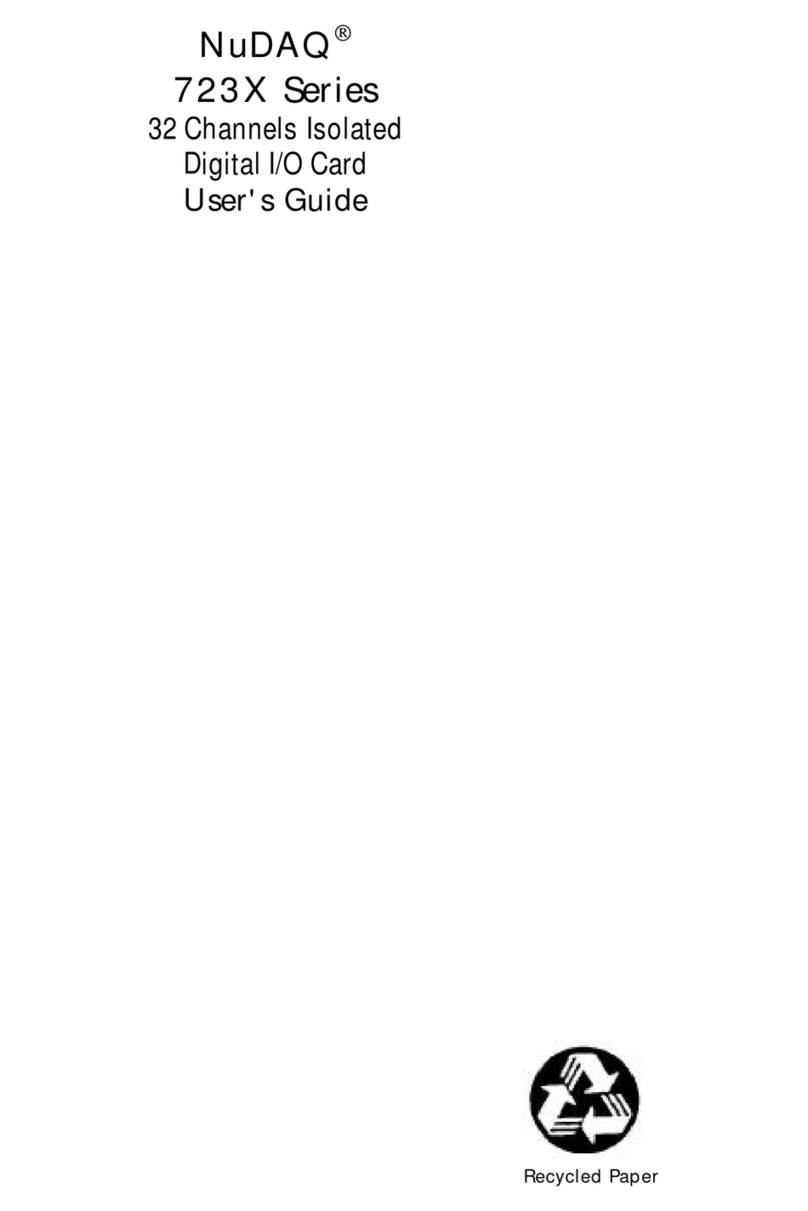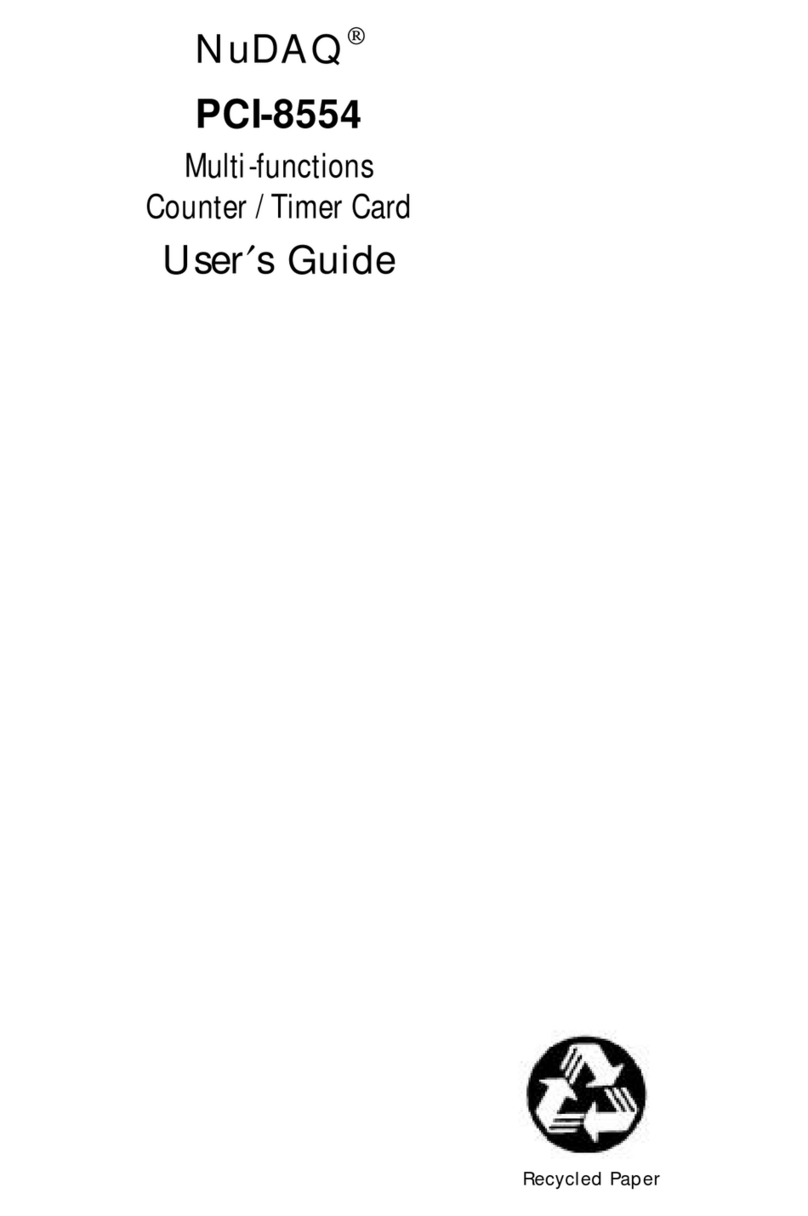Table of Contents i
Table of Contents
How to Use This Guide..............................................iii
Chapter 1 Introduction...............................................1
1.1 Features .............................................................................2
1.2 Applications .......................................................................2
1.3 Specifications.....................................................................2
1.4 Software Supporting...........................................................4
1.4.1 Programming Library........................................................................4
1.4.2 PCIS-LVIEW: LabVIEWRDriver.....................................................5
1.4.3 PCIS-VEE: HP-VEE Driver..............................................................5
1.4.4 DAQBenchTM: ActiveX Controls......................................................5
1.4.5 DASYLabTM PRO..............................................................................5
1.4.6 PCIS-DDE: DDE Server and InTouchTM......................................6
1.4.7 PCIS-ISG: ISaGRAFTM driver .........................................................6
1.4.8 PCIS-ICL: InControlTM Driver..........................................................6
1.4.9 PCIS-OPC: OPC Server..................................................................6
Chapter 2 Installation................................................7
2.1 What You Have...................................................................7
2.2 Unpacking ..........................................................................8
2.3 PCI-6308V Layout ...............................................................9
2.4 Hardware Installation Outline...........................................10
2.4.1 Hardware configuration..................................................................10
2.4.2 PCIslotselection............................................................................10
2.4.3 Installation Procedures...................................................................10
2.5 Device Installation for Windows Systems.........................10
2.6 Connector Pin Assignment...............................................11
2.7 Jumper Setting.................................................................12
2.8 Termination Board Connection ........................................13
Chapter 3 Registers Format.....................................14
3.1 PCI PnP Registers ............................................................14
3.2 I/O Address Map...............................................................15
3.2 DA Output Register ..........................................................15






























